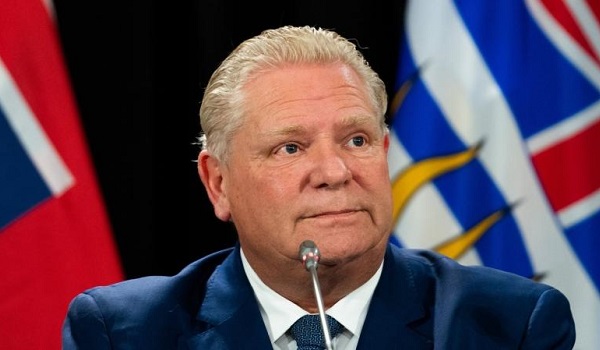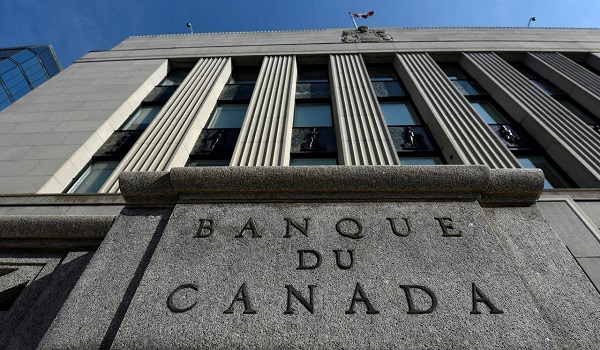Ontario to ban foreign students from the province medical schools
Premier Doug Ford is planning to bar new foreign students from medical schools and limit students from elsewhere in Canada while offering free tuition to 1,360 Ontarians if they agree to work as doctors in the province for five years.
In a move to tackle Ontario’s growing doctor shortage, Ford is expanding “learn and stay” grants to family medicine students and directing the province’s medical schools to “prioritize” 95 per cent of spots for Ontario residents starting in the fall of 2026.
“That is a game changer,” Ford said Friday in announcing what Health Minister Sylvia Jones called “bold action.”
The other five per cent would be students from the rest of Canada. In the unlikely event spots go unfilled, international students could be accepted.
But the impact will be felt harder by prospective out-of-province students than international ones. Government figures show just 10 or 0.26 per cent of 3,833 Ontario medical students this year are from other countries.
However, 473 students or 12 per cent are from elsewhere in Canada while the vast majority, 3,350 students or more than 87 per cent, are from Ontario.
“Let’s be clear,” said Liberal MPP and health critic Adil Shamji (Don Valley East), an emergency room physician, noting the tiny percentage of foreign medical students.
“Protecting more medical school spots for students in Ontario is a fair move, as other provinces do it all the time. But this won’t actually add any family doctors to the workforce for six years. Where was he with this policy two, three or four years ago?”
The grants will cost $88 million over the next three years.
Ford’s changes come with an early election expected next spring and the government vulnerable on the health-care front, with the Ontario Medical Association saying 2.5 million residents don’t have access to a family doctor — a number expected to rise as aging physicians retire.
The premier said he gets frustrated hearing some Ontario students had to go elsewhere for medical school for lack of spaces here, with many never returning, and appeared to blame foreign students despite their low numbers.
“This has been gnawing at me for years,” he said, standing with Jones in front of Queen’s University students in the family medicine program on a satellite campus at Lakeridge Health in Oshawa.
Ford, whose government has already expanded medical school spots and is opening new medical schools at Toronto Metropolitan University and York University, noted he hears from Ontario parents whose sons and daughters are at medical schools abroad.
“You’d go out to events and say … how are the kids? Well, they’re studying in Ireland, or they’re studying in the Caribbean, they’re studying in the U.S.,” he told reporters.
“And what happens next is, they meet someone and they don’t come back home.”
Ford suggested 18 per cent of students in Ontario medical schools are from other countries and less likely to set up shop here, but that percentage is actually for medical school graduates who are in residency training.
“Ontario students need to come first,” said Jones, who has pledged that every Ontarian will have access to a family doctor within five years.
The government’s problem is that family medicine is no longer a popular option, said Margaret Walton-Roberts, a professor at the Balsillie School of International Affairs at Wilfrid Laurier University in Waterloo.
“So it is not about international students. It is about making family medicine more appealing as a career,” added Walton-Roberts, an expert in international migration of health-care professionals.
“Currently it is not, and most students opt for specialty training.”
As Shamji pointed out, it will take years for the new measures — which include paying for the books and equipment of future family doctors — to have an impact because of the long time frame for training physicians.
Depending on the university, medical school is three or four years, followed by a two-year family medicine residency, said Dr. Dominik Nowak, a family physician who is president of the Ontario Medical Association.
He applauded the new grants as “an important, ambitious step” but urged the government to consider immediate measures, such as medical school debt forgiveness for new Ontario-trained doctors heading elsewhere if they agree to stay.
Nowak said many medical students graduate with “crushing debt” in the $100,000 to $200,000 range.
He declined to comment on the foreign medical student prohibition, saying, “It’s up to the government to answer questions on that.”
The Ontario Medical Students Association did not reply to a request for comment on Friday, while the Council of Ontario Faculties of Medicine said “we look forward to working with the provincial government to further understand the details with the shared goals to deliver high-quality medical education and to increase access to family physicians.”
New Democrat Leader Marit Stiles called for more government funding for residency positions to get more doctors into service.
The “learn and stay” program was established three years ago to provide financial assistance for nursing, paramedic and medical lab technology students to work in “underserviced” areas of the province.
The government estimates medical students accepted for the “learn and stay” program will eventually be able to serve about 1.36 million patients once they become physicians.
Medical students will be able to apply for the grant program for the 2026-27 academic year.
By then, the government hopes to have up to 100 doctors who attended medical school outside Canada fully trained and cleared to serve in rural areas under the province’s “Practice Ready Ontario” program.
This article was first reported by The Star












